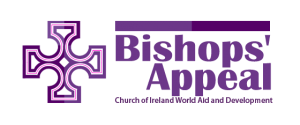Honey making in Indigenous communities in Paraguay
£6,990
Project: Expanding the honey project in the Chaco region of Paraguay (SAMS)
Background
The Chaco is a dry semi-tropical region of northwest Paraguay inhabited mainly by indigenous Indian communities who are amongst the most marginalised people in the country. Originally a nomadic people, since the 1980’s the Indians have held title to a number of areas where resident villages have developed. These are isolated communities where the Anglican Church is active. Churches have been built with local pastors serving the people. Agriculture is difficult owing to the climate vagaries and there is little work except on local ranches. As part of their nomadic life the Indians were used to gathering wild honey and in 1984 a project began in Sombrero Piri one of the large Indian homelands to provide groups of families with hives and processing equipment to enable them to produce honey bringing much needed finance into the community. In 1985 the project was extended into the El Estribo homeland. Provided that it meets their standard, Apicsa, a Mennonite Company based in the Chaco buy the honey produced.
The Project
To extend the honey producing project to La Patria a community of separate villages, which is the most remote of the Indian homelands being approximately 80 km from the nearest tarmac road. This has not been possible until now as the Indian community has not been able to afford the purchase of hives and the other equipment needed.
The proposal is for funding to enable families across a number of different villages to produce honey. Groups, each of five families, will work together. Each family will be provided with one hive and two sets of protective clothing will be provided per group. Each village will receive one set of equipment for extracting, sieving and dispensing the honey into containers.
The project would be managed on a revolving loan system with families paying back the cost of their equipment over time. Normally this would be half of their sales profit and would then allow for reinvestment to enable more families to participate. This system has proved to work well in the past.
In the first year expected honey production is between 20 and 30 litres per hive depending upon the time of year the swarms are hived. At present there is a shortage of honey and consequently the price to the producer has risen. Honey will be marketed via Apicsa with any which is produced at below their standard being usually exchanged with visiting traders for food, clothes or other goods.
Training, supervision and management of the project
While some training in beekeeping has been delivered in the La Patria community in the past, update training will be delivered to each village by Esteban Galeano, a well respected leader from El Estribo who has considerable experience in beekeeping and as a trainer. Owing to his good links with the Mennonites, Esteban will also assist with establishing sales arrangements.
Chris Hawksbee, a missionary who is trained in agriculture and development and works with the Indian churches and communities in the Chaco region providing training in subsistence level farming and cash cropping, will oversee the project.
The proposal is for a project of 100 hives across 20 groups of 5 families each from a total of 4 villages.

